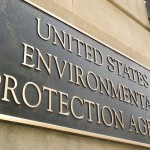The EPA is warping the peer review process to give its regulations scientific clout. Congressional investigators found that the Clean Air Scientific Advisory Committee (CASAC) Ozone Review Panel – the scientists who “peer-review” the EPA’s regulations – suffer from lack of impartiality and conflict of interest.
For example, 16 of the 20 members of the panel are cited – more than 700 times in total – in key EPA environmental regulations that these members are then supposed to assess unbiasedly. And, 15 of the 20 panelists are on the EPA’s payroll, cumulatively receiving $180.8 million in EPA grants, with one panelist, Ed Avol of the University of Southern California, receiving $51.7 million. This is at best a gross conflict of interest and at worst a pay-off. It is certainly scientific misconduct and likely a violation of federal law. Meanwhile, the panel continues to “review” the EPA’s proposed National Ambient Air Quality Standards (NAAQS) that are projected to cost a record $100 billion annually.
House Science Committee chairman Lamar Smith (R-TX) criticized the panel last week for this lack of independence: “panelists reviewing their own work; a lack of turnover among CASAC Ozone Review Panel members; and, existing financial relationships between Panelists and the Agency.”
The EPA’s use of so-called “sweetheart review,” where biased parties conduct the review, is just another example of its agenda-driven, junk science. In this case, the EPA is completely ignoring the fundamental tenet of the peer review process that scientists be “blind” to the study they are reviewing so no bias – even if unintentional – is brought to the review.





